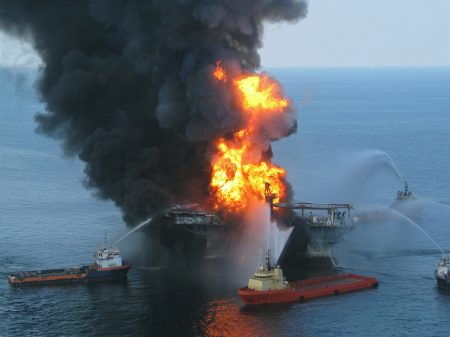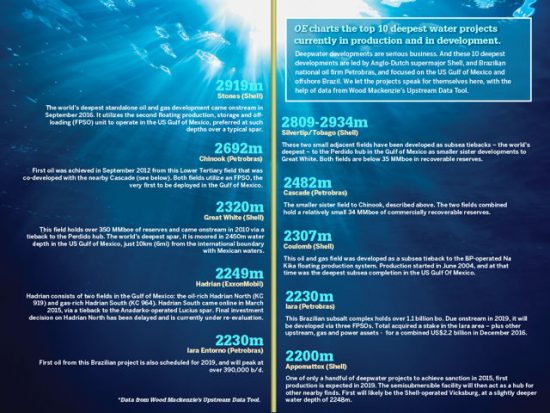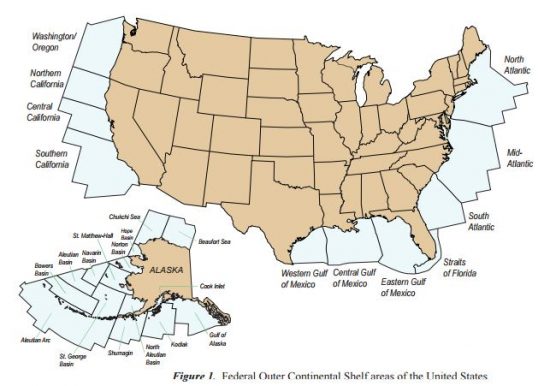May 4, 2017 – Will we witness another Deepwater Horizon in our lifetimes? Highly likely considering that oil exploration in the deep ocean continues unabated.
The infographic below gives you a picture of the 10 deepest water projects currently in production or under development. Oil companies are going deeper to find fossil fuel deposits while the nations of the world commit to reducing human-generated carbon in the atmosphere. The juxtaposition of these contradictions is troubling in so many ways.
On April 20, 2010, the world learned about an oil well blowout in the Gulf of Mexico that killed 11 workers and dumped millions of barrels of oil into the sea. An undetected leak in the well caused gas to rise through the cement-encased drill hole leading to an on deck explosion and fire. This was accompanied by the failure of a seafloor-installed device called a blowout preventer.
The drilling rig, owned by the contractor, Transocean, had encountered some problems while completing the project. The unknowns still remain. Could the drilling have passed through a layer of methane hydrate? Methane hydrates form on the ocean floor. They consist of compressed natural gas that forms into ice under the immense pressures of overlying seawater. Destabilized, methane hydrates can rapidly expand to 164 times their volume.
Deepwater Horizon had experienced sudden methane releases during drilling which strongly suggests the presence of methane hydrate on the sea floor or buried in sediments the drill passed through.
What was the depth of the seafloor for at the site of Deepwater Horizon? 700 meters less than the most shallow of the wells depicted in the above infographic.
It remains uncertain whether British Petroleum was aware of the presence of any methane hydrates on the seafloor or sediments beneath the drilling rig. Some describe the accident as preventable citing that the company was cutting corners in terms of margin of safety related to the cement that surrounded the wellhole bore. The well depth was almost 5,600 meters, of which 4,050 meters was below the sea floor. Described by the industry as not exceptionally deep, reviews of the procedures cite the failure of contractors to use the right amount of casing cement and enough setting time to cause an imperfect seal which ultimately compromised the blowout preventer. In other words, a bad well plan, poorly executed and a net result of 11 dead, 87 days and 5 million barrels of oil spilling into the Gulf, a disaster for the ecology of many parts of the U.S. Gulf coast and for sea life which continues to this day.
And yet the industry just continues to chug along while the rest of us wait for the next human-generated environmental disaster.
Add to this the intent of the new American president to open America’s coastlines, Atlantic, Pacific, and Arctic, to more offshore oil and gas drilling, overturning the previous administration’s rulings to protect coastal waters from another Deepwater Horizon. The areas outlined in blue on the map below represent those previously excluded and likely in the near future, if the administration succeeds, in becoming a playground for oil companies.
So I repeat the question posed at the beginning of this piece. Will we witness another Deepwater Horizon in our lifetimes?











